When Eva Schachinger married at 22, she applied for public housing. Luckily, she lived in Vienna, which has some of the best public housing in the world. It was 1968. Eva was a teacher, and her husband, Klaus-Peter, was an accountant for the city’s public-transportation system. She grew up in a public-housing complex in the center of the city, where her grandmother, who cared for her from 6 in the morning until 6 at night, lived in one of five buildings arranged around a courtyard. Eva played all day with friends from the complex.
Her mother, who was renting on the private market after a divorce, had recently applied for public housing, too, and she was offered a unit first, in 1971. By then, Eva had a young daughter, and her mother decided Eva needed the spot more and offered it to her. The available unit was in the 21st District, on the northeastern edge of the city. Eva’s father-in-law warned her — not entirely jokingly — that out there, they would be the first to be occupied by the Russians. But she and Klaus-Peter liked the floor plan: Although the apartment was an economical 732 square feet, it had two bedrooms, a living room, a dining room, a toilet and washroom and a balcony. The rent was 700 schillings. (That’s about 55 euros, though the currency wasn’t introduced until 1999.) Eva transferred her teaching job to the 21st District, to a school a 15-minute walk from her new apartment.
When I met Eva late last year, she looked smart in a jean jacket with a neatly tied silk scarf around her neck, small dangly earrings and cropped curly hair. Over the course of the last 44 years, as she continued to teach English to fifth through eighth grades, Eva’s rent increased almost fivefold, to 270 euros from 55, but her wages increased more than 20-fold, to 3,375 euros a month from 150. Viennese law dictates that rents in public housing can increase only with inflation, and only when the year’s inflation exceeds 5 percent. By the time she retired in 2007, Eva’s rent was only 8 percent of her income. Because her husband was earning 4,000 euros a month, their rent amounted to 3.6 percent of their incomes combined.
That’s about what Vienna was aiming for back in 1919, when the city began planning its world-famous municipal housing, known as the Gemeindebauten. Before World War I, Vienna had some of the worst housing conditions in Europe, Eve Blau notes in her book, “The Architecture of Red Vienna.” Many working-class families had to take on subtenants or bed tenants (day and night workers who slept in the same bed at different times) in order to pay their rent. But from 1923 to 1934, in a period known as Red Vienna, the ruling Social Democratic Party built 64,000 new units in 400 housing blocks, increasing the city’s housing supply by about 10 percent. Some 200,000 people, one-tenth of the population, were rehoused in these buildings, with rents set at 3.5 percent of the average semiskilled worker’s income, enough to cover the cost of maintenance and operation.
Experts refer to Vienna’s Gemeindebauten as “social housing,” a phrase that captures how the city’s public housing and other limited-profit housing are a widely shared social benefit: The Gemeindebauten welcome the middle class, not just the poor. In Vienna, a whopping 80 percent of residents qualify for public housing, and once you have a contract, it never expires, even if you get richer. Housing experts believe that this approach leads to greater economic diversity within public housing — and better outcomes for the people living in it.
In 2015, before they bought an apartment on the private market, the Schachingers were making about 80,000 euros ($87,000) a year, roughly the income of the average U.S. household in 2021. Eva and Klaus-Peter paid 26 percent and 29 percent in income tax, respectively, but just 4 percent of their pretax income was going toward rent, which is about what the average American household spends on meals eaten out and half a percentage point less than what the average American spends on “entertainment.” Even if the Schachingers got a new contract today on their unit, their monthly payments would be an estimated 542 euros, or only 8 percent of their income. Vienna’s generous supply of social housing helps keep costs down for everyone: In 2021, Viennese living in private housing spent 26 percent of their post-tax income on rent and energy costs, on average, which is only slightly more than the figure for social-housing residents overall (22 percent). Meanwhile, 49 percent of American renters — 21.6 million people — are cost-burdened, paying landlords more than 30 percent of their pretax income, and the percentage can be even higher in expensive cities. In New York City, the median renter household spends a staggering 36 percent of its pretax income on rent.
To American eyes, the whole Viennese setup can appear fancifully socialistic. But set that aside, and what’s mind-boggling is how social housing gives the economic lives of Viennese an entirely different shape. Imagine if your housing expenses were more like the Schachingers’. Imagine having to think about them to the same degree that you think about your restaurant choices or streaming-service subscriptions. Imagine, too, where the rest of your income might go, if you spent much less of it on housing. Vienna invites us to envision a world in which homeownership isn’t the only way to secure a certain future — and what our lives might look like as a result.
Writing about housing in the United States, I’ve become depressed. I’m the scold at the dinner party, revolted by big investors speculating in the housing market, yes, but also by the thousands of small-time investors — including some of my own friends — who are pooling money to buy homes in states they’ve never seen or buying rental properties in gentrifying neighborhoods. But the math is hard to argue with. Buying a home near work is more lucrative than working. The growth of asset values has outstripped returns on labor for four decades, and a McKinsey report found that a majority of those assets — 68 percent — is real estate. Last year, one in four home sales was to someone who had no intention of living in it. These investors are particularly incentivized to buy the sorts of homes most needed by first-time buyers: Inexpensive properties generate the highest rental-income cash flows.
Real estate is a place where money literally grows on tree beams. In the last decade, the typical owner of a single-family home acquired nearly $200,000 in appreciation. “Another word for asset appreciation is inflation,” the academics Lisa Adkins, Melinda Cooper and Martijn Konings write in “The Asset Economy,” “an increase in monetary value without any corresponding change in the nature of the good itself or the conditions of its production that would make it scarcer or justify an increased demand for it.” That inflation is creating a treacherous gulch between the housing haves and have-nots. Harvard’s Joint Center for Housing Studies found that, in 2019, the median net worth of U.S. renters was just 2.5 percent of the median net worth of homeowners: $6,270 versus $254,900. Last year, as higher interest rates slowed home sales and caused prices to plateau (and even soften in some overheated cities), the asking price of the median U.S. rental reached $2,000 a month, a record high, according to Redfin. Inflated rent prices line the pockets of landlords while preventing renters from saving for a down payment and ever getting off the treadmill.
The astronomical pace of appreciation is the culmination of decades of policy aimed at encouraging home buying. The fixed-rate, 30-year mortgage is a particularly American invention, possible only because the federal government insures the debt — if a borrower defaults, the government is on the hook. (Only one other country, Denmark, offers the same instrument.) Then there’s our tax code, which allows those affluent enough to buy homes and itemize their deductions to write off the interest they pay on their mortgages: the bigger the mortgage, the bigger the deduction. Homeowners can deduct up to $10,000 of their property taxes from their federal taxes too, and if they sell their primary residence, they may be able to avoid paying capital gains on profits of up to $250,000 per person ($500,000 for couples). As housing activists like to point out, everyone who has a mortgage is living in subsidized housing.
Last year, troubled by the seeming intractability of these problems, I began looking for solutions outside the United States. Could the answer be rent control, as in Berlin? It might have seemed that way a decade or so ago, before investors and new residents began pouring into the city, causing land values to quintuple; now, despite rent-stabilization laws, even the apartments that no one else wanted to buy 15 years ago are huge moneymakers. Many residents with affordable rental contracts are locked into them because it would be too expensive or competitive to move. Frustrated by the housing squeeze, tenant organizers recently put forth an “expropriation” measure, which called for landlords with more than 3,000 units to sell their holdings back to the government at below-market prices. In a 2021 referendum, 59 percent of Berliners voted in favor of it, but it’s not clear whether it will ever be implemented.
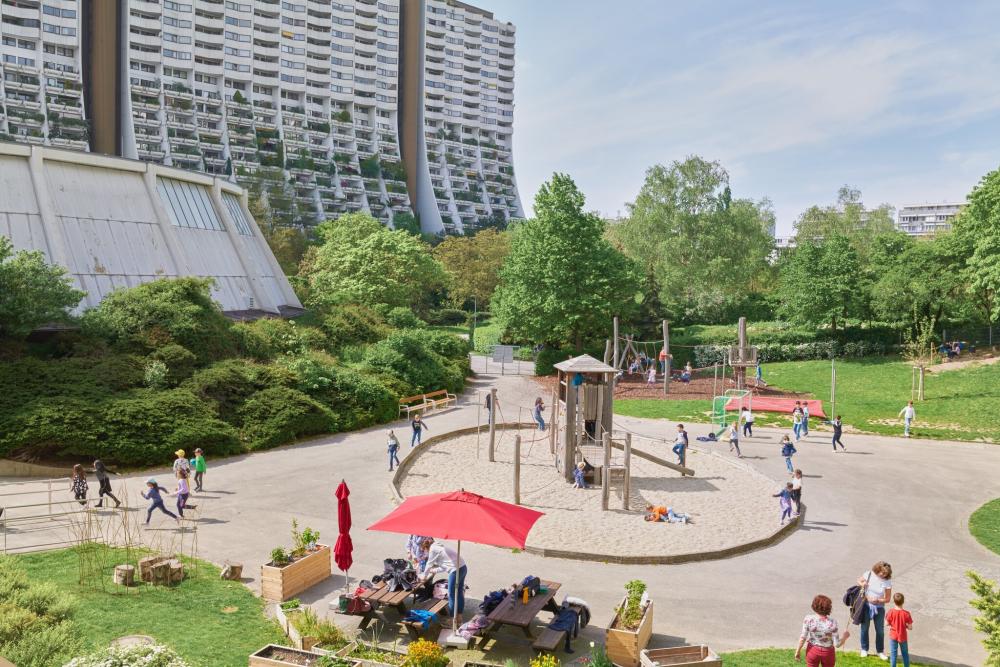
Could the answer be loosening zoning restrictions, as Tokyo did in 2002? That has certainly helped. In 2014, there was more home construction in the city than in all of England. Since then, home prices have stabilized. Tokyo is largely celebrated as a model by YIMBYs (members of the “yes, in my backyard” movement) because they like its market-driven approach to housing abundance. They often point out that the city builds five times as much housing per capita as California. But Japan is a very different market because of its earthquake risk: Because regulatory codes and mitigation technologies are ever improving, structures often fully depreciate within 35 years. Older homes are often undermaintained because there’s little expectation that any investment might be recaptured upon resale; they’re thought of like used clothing or cars — you resell at a loss.
Auckland, New Zealand, might seem like a more applicable example. In 2016, the city, which has one of the most expensive housing markets in the world, “upzoned” 75 percent of its residential land, increasing its legal capacity for housing by about 300 percent in an effort to encourage multifamily-housing construction and tamp down prices. In areas that were upzoned, the total number of building permits granted (a way of estimating new construction) more than quadrupled from 2016 to 2021. As intended, the relative value of underdeveloped land increased, because it could suddenly host more housing, and the relative value of units in densely developed areas decreased, tempering sky-high prices. But there are limits to what upzoning can do. Often the benefits of allowing greater density are captured by developers, who price the new units far above cost. It doesn’t offer renters security or directly create the type of housing most needed: affordable housing.
That’s what differentiates Vienna. Perhaps no other developed city has done more to protect residents from the commodification of housing. In Vienna, 43 percent of all housing is insulated from the market, meaning the rental prices reflect costs or rates set by law — not “what the market will bear” or what a person with no other options will pay. The government subsidizes affordable units for a wide range of incomes. The mean gross household income in Vienna is 57,700 euros a year, but any person who makes under 70,000 euros qualifies for a Gemeindebau unit. Once in, you never have to leave. It doesn’t matter if you start earning more. The government never checks your salary again. Two-thirds of the city’s rental housing is covered by rent control, and all tenants have just-cause eviction protections. Such regulations, when coupled with adequate supply, give renters a level of stability comparable to American owners with fixed mortgages. As a result, 80 percent of all households in Vienna choose to rent.
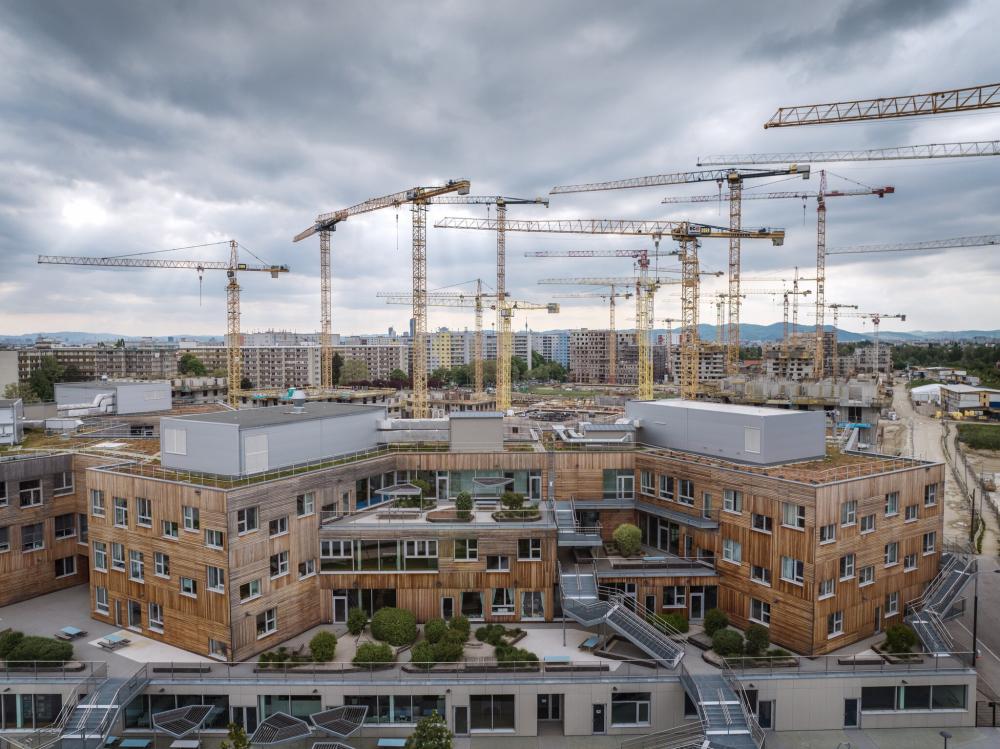
The key difference is that Vienna prioritizes subsidizing construction, while the United States prioritizes subsidizing people, with things like housing vouchers. One model focuses on supply, the other on demand. Vienna’s choice illustrates a fundamental economic reality, which is that a large-enough supply of social housing offers a market alternative that improves housing for all.
One afternoon last fall, I walked through central Vienna, past ornate buildings with lacy balconies, balustrades and porticos — private apartments from the 19th century. They were interspersed with social-housing blocks from the 1920s and 1930s — the Gemeindebauten, which stood out not only for their modernist architecture but also for the triumphant red block lettering on their facades, announcing: Erbaut von der Gemeinde Wien in den Jahren 1925-1926 aus den Mitteln der Wohnbausteuer. (“Built by the municipality of Vienna in the years 1925-1926 from funds from the housing tax.”) A stroke of political genius, I thought, as I waited for the tram: explanation and advertising. Half an hour later, I was in the 21st District, the “Russian territory” where Eva Schachinger used to live. Wohnpartner, the city agency that tries to foster community within the Gemeindebauten and helps resolve tenant conflicts, was having an open house at her old building, a flat, minimalist complex with orange elevator shafts.
Following Wohnpartner signs, I found the glass-walled community center and entered. Most of the attendees were mothers with small children or retired people. There was a painting station, table tennis and a plant exchange. People had brought their secondhand goods to give away, and a millennial Wohnpartner staff member offered tech help, which, surprisingly, no one seemed to need. Among the permanent fixtures was a library filled with free books and a play area with an array of wooden toys.
I took a seat with Eva in the communal kitchen, where someone had made a large pot of butternut-squash soup. (Some of Red Vienna’s planners had hoped to centralize cooking in communal facilities with industrial-strength machines, but the fascists came first, and then, under capitalism, Austrian families quickly became accustomed to shelling out for their own KitchenAids, Vitamixes and Nespresso machines.) Since retiring, Eva has been collaborating with Malyuun Badeed, the building’s caretaker, on a twice-yearly magazine for the complex that includes a recipe and a crossword, along with the latest community news. Badeed, who joined us in the kitchen, wore a black hijab with pearls and waved her hands as she spoke of leaving Somalia as a single mother in the 1990s. When she first arrived in Vienna, she hawked newspapers on the street; now she helped produce one.
Eva told me she often came back to the Gemeindebau to tutor students from the complex with a woman named Edith, an elderly neighbor who lived in a nearby Gemeindebau. Edith’s next-door neighbors help buy and deliver her groceries, which she has difficulty carrying. In exchange, she watches over their three children. When Eva called to wish her a merry Christmas, Edith was busy wrapping 40 presents for the three kids; she hid them around her apartment so they wouldn’t be found before Santa came to visit. “The Gemeindebau is where socialization happens,” Eva was fond of telling me, and this is what socialization looks like across the generations.
I learned that the average waiting time to get a Gemeindebau is about two years (at any given moment there are 12,000 or so people on the waiting list, and each year about 10,000 or more people are housed). Vienna residents — anyone who has had a fixed address for two years, whether they are a citizen or not — may apply, and applications are evaluated based on need. Florian Kogler, a 21-year-old university student, was considered an urgent case because he lived in an overcrowded two-bedroom apartment with his mother, stepfather and two siblings. He shared a room with his brother, while his parents slept in the living room. He also got priority because he was moving into his own apartment for the first time. Kogler was offered an apartment in about a month. “That’s unusually fast,” he told me.
Applicants may decline up to two units; if they decline a third, they have to apply again. Kogler took the first flat offered to him, a 355-square-foot studio drenched in light overlooking a playground in the central 12th District. It cost 350 euros a month; his monthly income from working part time at a museum is about 1,000 euros. Those who need extra assistance to pay their rent receive individual subsidies. Students under 25, like Kogler, can qualify for 200 euros a month.
Every few years, there is a debate about whether the affluent should be forced to give up their Gemeindebau leases — that is, whether the units should be means-tested. The face of this debate, for some, is Peter Pilz, a former member of Austria’s Green Party in Parliament. Pilz lives in Goethehof, one of the largest Gemeindebauten by the Danube River. He moved into a unit as a university student to live with his grandmother, who had been there since the building opened in 1932. Before she died, he took over her contract. (He was, one might say, grandmothered in.) Pilz was elected to Parliament in 1986 and eventually started making more than 8,000 euros a month.
Even in Vienna, Pilz’s tenancy raised eyebrows, making headlines in Austria’s conservative paper, Österreich, which claimed in 2012 that he was paying only 66.18 euros a month in rent. (Pilz says he was paying, including building costs, closer to 250 euros a month.) “Given that Pilz’s income is well over the usual tariff for social housing, it does look like we’re talking about social fraud here,” said the general secretary of the conservative Freedom Party of Austria.
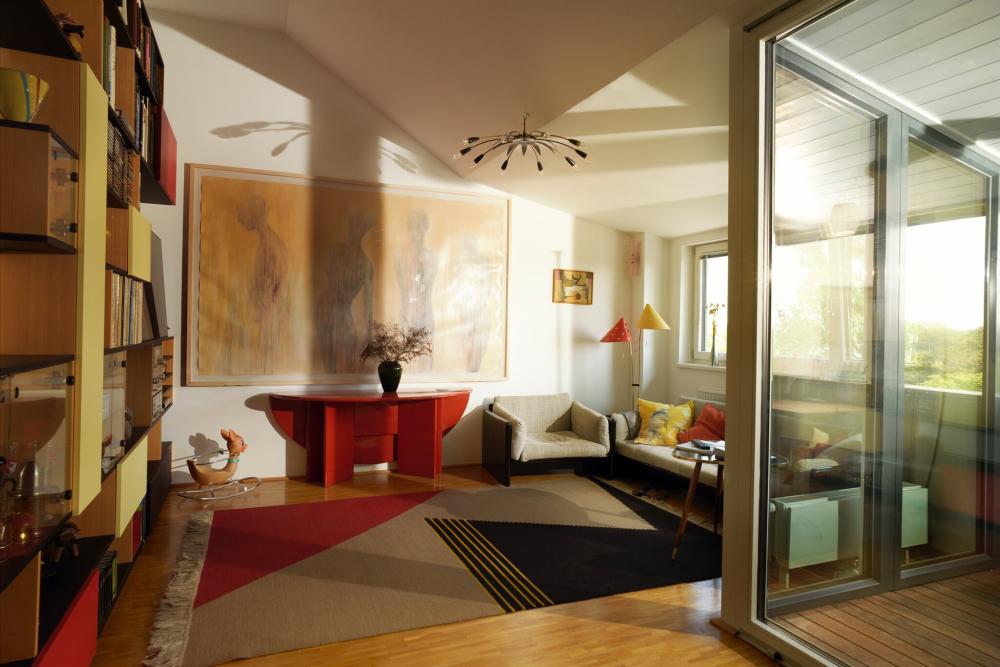
Pilz did nothing illegal. Once in a Gemeindebau, you never have to leave. But is it unethical for the wealthy to stay? City housing officials point out that having wealthier tenants in the Gemeindebauten helps thwart the problems that accompany concentrated poverty, creating a more stable, healthier environment for everyone. Unlike in the United States, where public housing is only for the poorest — the average resident’s annual household income was $15,219 in 2019, well below the federal poverty line of $16,910 for a family of two — the relative integration of the Gemeindebauten means that they are not stigmatized.
That’s not to say they are problem-free. Noomi Anyanwu, the 23-year-old founder of Black Voices Austria, told me that she grew up in a Gemeindebau with an Austrian mother and a Nigerian father. When she wasn’t more than 5, a white boy in the complex who was a bit older called her brother a racial slur while everyone was playing in the courtyard. Overhearing the spat, the fathers descended into the courtyard. But the white father didn’t apologize; he doubled down, repeating what his son said. Just a few years later, Anyanwu said, her father left the country because of employment discrimination and racist treatment by the police.
So I was surprised when Anyanwu told me that, on the whole, her experience with social housing was positive. The Gemeindebau was its own village within the city, she said. She estimated that 50 percent of her Gemeindebau neighbors were immigrants — “it reflected society,” she told me. (Vienna actually has a slightly higher percentage of foreign-born residents than New York City.) A girl her age named Safiya lived in an apartment across the hall from hers and would become her best friend. Safiya’s father was also from Africa — from Somalia — and he, too, left because of racism. But the affordability of the Gemeindebau allowed the girls’ mothers to maintain stability.
Esra Ozmen, the daughter of Turkish immigrants, grew up in Sandleitenhof, one of the largest Geimendebauten, which has villa-like courtyards and stonework. As an adult, she moved into her own Gemeindebau studio. Ozmen says affordable housing gave her the stability to study for a Ph.D. in fine art while also pursuing a rap career. She makes 1,000 to 2,000 euros a month from her shows and from organizing cultural events. “I have a car,” she told me. “A Mercedes A-Class from the ’90s. I eat out. I drink one coffee out every day. I don’t have a lot of money. But I live rich.”
Social housing like Vienna’s might seem inconceivable in America. But American politicians seriously considered it in the 1930s. After the stock-market crash of 1929, the U.S. housing market also collapsed; half of mortgage debt was in default by 1933. Both the right and the left agreed that the government needed to intervene. The question was how. According to the historian Kenneth T. Jackson in his book “Crabgrass Frontier,” at the time, the typical mortgage ranged from five to 10 years, and borrowers paid interest only until the end of the term, when full payment was due or a borrower refinanced. When President Franklin D. Roosevelt took office in 1933, Congress created the Home Owners’ Loan Corporation to buy underwater mortgages and stabilize the housing market. Within two years, the H.O.L.C. restructured more than a million mortgages, covering 10 percent of all owner-occupied homes. Principal and interest were bundled together so that over about 20 years of manageable payments, borrowers became outright homeowners.
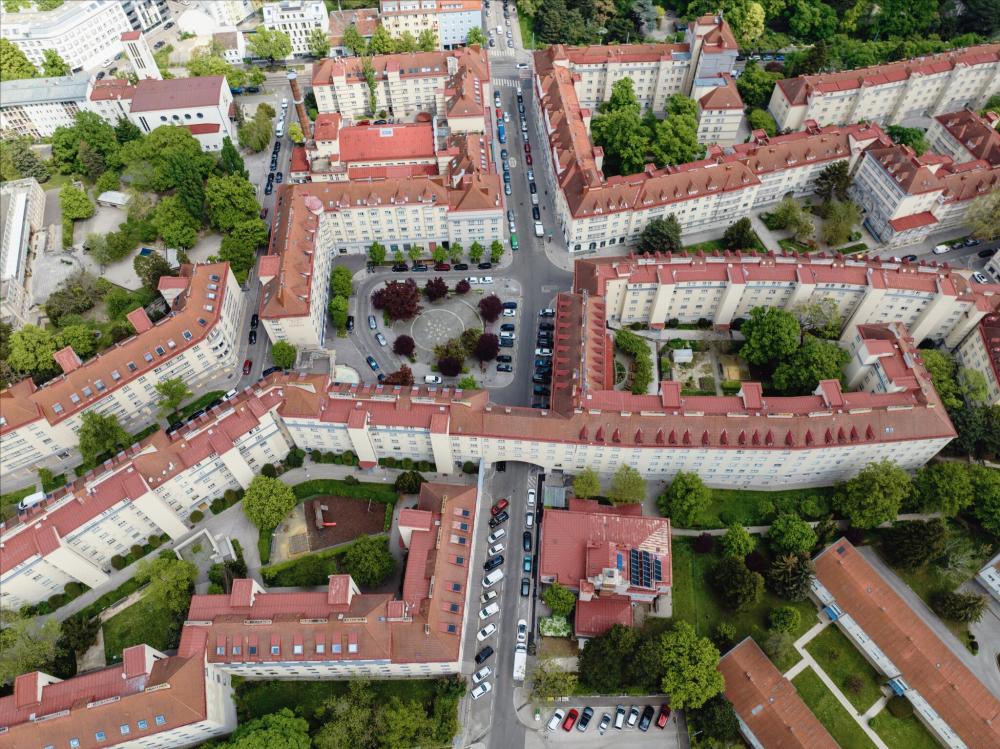
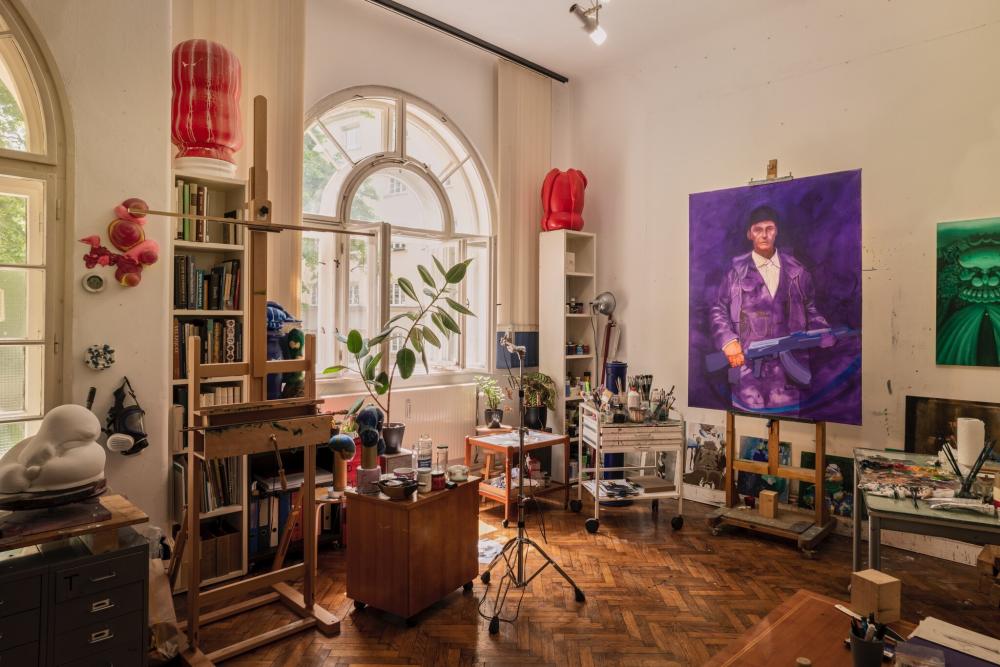
But that wasn’t enough to salvage the real estate market or the economy. During the Great Depression, one-quarter of all Americans were unemployed, and the construction industry was hit particularly hard. The United States needed the same things as Vienna at the time: employment and better housing conditions for workers. Housing is “the wheel within the wheel to move the whole economic engine,” said Marriner Eccles, Roosevelt’s Federal Reserve chairman. The Federal Public Works Administration, an emergency jobs program, funded construction of about 50 new public-housing complexes, including the Harlem River Houses in New York City, a project seemingly straight out of Vienna, with Beaux-Arts-inspired buildings along a central courtyard with a nursery school, health clinics and a public library.
Although this housing was admired, it was costly and mired in controversy, writes the historian Gail Radford, who chronicles the New Deal-era debate over social housing in her book, “Modern Housing for America.” Roosevelt sought a housing plan that didn’t require the government to keep footing the bill. At a time when Communism was gaining traction, he preferred to wed Americans to capitalism. The best way to do that? Broaden the base of homeowners — increase the number of Americans with a personal investment in property.
Congress’s National Housing Act of 1934 would rescue the housing market and establish the housing policy that defines America today. It made permanent the fixed-rate, long-term mortgage that the H.O.L.C. had helped introduce. Banks were reluctant to assume risk over decades, so the act created the Federal Housing Administration (F.H.A.) to insure mortgage debt with the full backing of the U.S. Treasury as long as loans conformed to standards it set — for instance, homes had to appraise for the purchase price and had to be in a stable-enough neighborhood, which meant a white-enough neighborhood, to make sure the government wouldn’t lose money if a borrower defaulted. On its maps, the F.H.A. colored the neighborhoods deemed too risky for mortgage insurance in red — a form of “redlining,” a policy that did a great deal to create the grave racial disparities in wealth that persist today. “No agency of the United States government has had a more pervasive and powerful impact on the American people over the past half-century,” Jackson writes.
But the Federal Housing Administration had no plan to address low-income housing needs. So Senator Robert Wagner, a New York Democrat, introduced a second bill, inspired by what the housing scholar Catherine Bauer had seen in Vienna and other European cities. As proposed, the Housing Act of 1937, which Bauer helped write, would have included financing for the construction of both limited-profit housing and public housing. Faced with fierce opposition from the real estate industry, Wagner and Bauer accepted five fatal compromises in order to pass the bill. First, support for nonprofit and limited-profit cooperatives was eliminated. Second, location decisions were left to local governments, many of whose constituents greeted public housing like the bubonic plague, as one commenter put it. Third, a provision was added for an “equivalent elimination” of slum property, meaning that for each new unit built, a slum dwelling had to be cleared. (That way, public housing wouldn’t dampen landlords’ profits by increasing the overall supply of units.) Fourth, public housing would be eligible only to those so poor that they could never secure decent housing in the private market.
Fifth and finally, construction costs were severely limited. The problem with America’s public housing today isn’t just that it’s underfunded and poorly maintained. It’s that it wasn’t built well to begin with. Doors were left off closets; interior walls were thin and cheap. At a public-housing complex in Red Hook, Brooklyn, the elevator only stopped on every other floor. As Radford writes, “Those who hated public housing remained hostile, while the minimal buildings produced by the [United States Housing Authority] attracted no new allies and discouraged some of the old ones.” Indeed, America’s public housing was designed to fail: to be unappealing to anyone who could afford to rent.
As Bauer predicted early on, housing programs targeting only the poor would lack the political support necessary to thrive. Only an integrated program, one that welcomed the majority like the Gemeindebau of Vienna, would be sustainable. But the U.S. government prioritized support for banking rather than construction. The 30-year mortgage was a huge economic boon for the millions of Americans who took one out, benefiting from the federal subsidies and the nation’s long upward trajectory in home prices; the instrument leveraged many a renter and public-housing resident into homeownership and “turned many a former dependent of the public sector into a small-time fiscal conservative,” as Adkins, Cooper and Konings write in “The Asset Economy.”
This constituency of middle-class homeowners is what the Dartmouth emeritus economist William A. Fischel calls “homevoters”: a coalition of Americans who — consciously or not — vote to protect the value of their property. They tend to oppose local development and favor exclusionary zoning — which ensures maximum appreciation and prevents their tax dollars from extending to poorer neighborhoods. This tendency, alongside stagnant wages, has transformed the nation’s housing stock into an ever-scarcer and ever-more-expensive class of speculative asset. It’s almost impossible to “cater to the expectations of an existing constituency of middle-class homeowners without raising the barriers of entry for the rest of society,” Adkins and her colleagues write. “A middle-class politics of asset democratization has ended up undermining the conditions of its own viability.”
I wasn’t the only American looking to Vienna for possible answers to America’s housing crisis. I was there following a delegation from New York that had come to study the city’s housing system — 50 policymakers, researchers and activists invited by Housing Justice for All, an alliance of housing organizers across the state, and the Action Lab, a social-movement hub. One afternoon, I joined them on a tour of Karl-Marx-Hof, one of the largest housing complexes in the world.
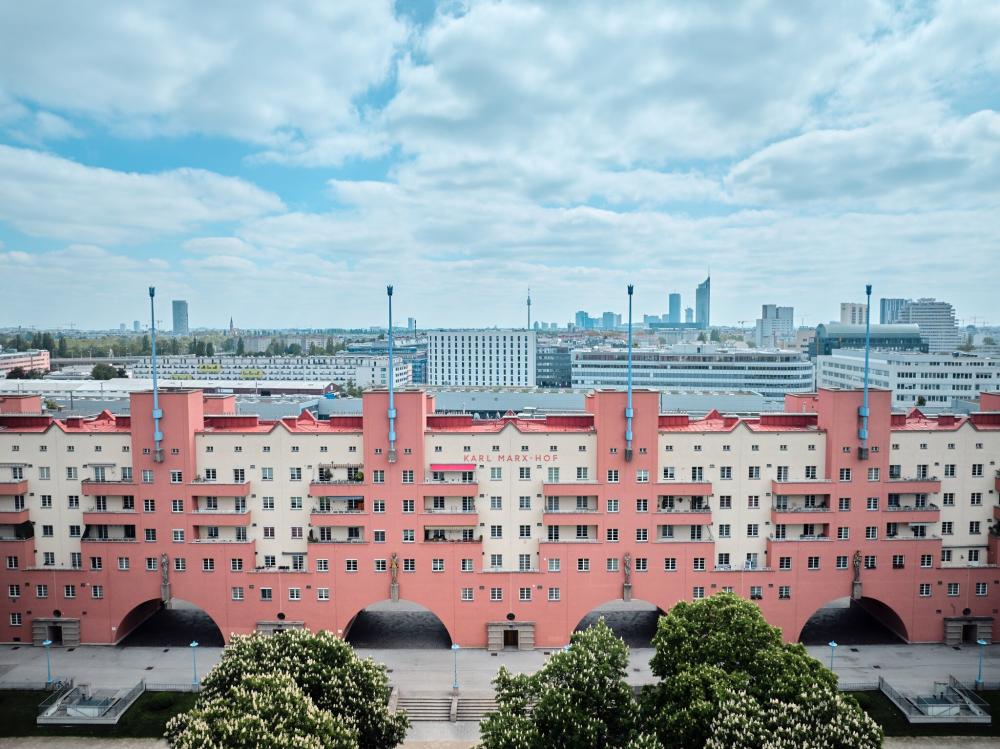
Ever since Karl-Marx-Hof opened in 1930, it has been a sort of Rorschach test — a domineering socialist monstrosity or a pioneering communitarian stronghold, depending on your political perspective. Exiting the subway station, the building shot up before me, seven stories tall and three-quarters of a mile long, a perimeter block that looks like a citadel. The core of the building is cream-colored, but its sandstone red elements draw the eye — red balconies and red towers topped by staffs that can fly enormous banners that are visible miles away. Its six huge arched passageways, also red, give the complex the civic stature of an aqueduct.
Julia Anna Schranz, a Ph.D. candidate at the University of Vienna and our guide, wore Converse, jeans and a long red wool coat. She pointed out four grim ceramic figures mounted on top of the archways, explaining that they were personifications of enlightenment, freedom, welfare and physical culture. These embellishments — commissions to increase employment during the period between the world wars, were also seen as an investment in the aesthetics of the Gemeindebauten and a tribute to its tenants.
Schranz opened the thick, thorny iron gates spanning one archway, and we passed into a grassy courtyard — nearly two football fields in size. Painted an off-white that glowed in the morning sun, the interior was a striking contrast with the more formidable exterior.
“These are the projects,” India Walton, a community organizer from Buffalo, said wryly. There was a rose garden. Children — Black, brown, white — were running and shrieking in a playground attached to an on-site kindergarten. Walton, now in her 40s, had twins when she was just 19 and raised them while working as a nurse. Decades later, she became politically active, and in 2021 she won the Democratic nomination for mayor of Buffalo, only to be defeated by a write-in campaign by the Democratic incumbent. Where would she be now if she had the option of living in a place like this? She would have left her marriage sooner, Walton told me. “I might not have been a nurse, but a doctor.” A child in the kindergarten waved at her, and she waved back.
When Karl-Marx-Hof opened, it housed 5,000 people in 1,400 apartments. These apartments were coveted. “It had two central laundries, two communal bathing facilities with tubs and showers, a dental clinic, maternity clinic, a health-insurance office, library, youth hostel, post office, and a pharmacy and 25 other commercial premises, including a restaurant and the offices and showroom of the BEST, the city-run furnishing and interior-design advice center,” Blau writes.
Now fewer than 3,000 tenants live in Karl-Marx-Hof — not because it’s undesirable but because living standards have improved and, in response, Vienna has allotted tenants more space. Vienna’s housing authority believes that a family of four needs around 1,100 square feet, so it combined some of the units to create larger ones.
A bobblehead nodded from a balcony with potted plants and cairns. An older Austrian man waved. State Assemblywoman Emily Gallagher, a Democrat who had recently unseated the incumbent Democrat in the 50th Assembly District, which includes parts of Greenpoint, Williamsburg and Fort Greene, live-tweeted the tour on her phone. State Senator Julia Salazar, a Democrat representing the 18th State Senate District, which covers Bushwick, took notes with a gold pen on a notebook with black paper. Renette Bradley, a tenant organizer, wore a Nickelodeon shirt, overalls, a black New York beanie and lavishly long fake lashes. “Can you be paroled here?” she asked, her voice husky and direct. This affected many of Bradley’s friends and relatives who, upon release from prison, were left homeless because they weren’t allowed to join family living in public housing.
Schranz looked at her blankly.
“Can you come out of prison and live here?” Bradley repeated.
“Of course,” Schranz said. “Why not? If you’re out, you’re out.”
The New Yorkers murmured. Schranz continued to look at us questioningly.
“There’s like four or five problems baked into that question that they just don’t understand,” Joseph Loonam, a housing campaign coordinator with VOCAL-NY, said as we walked toward the laundry facilities. He told me that a member of his organization had been arrested more than 40 times because whenever he visits his family in the Gowanus projects, he violates the terms of his plea deal.
At the museum store, I bought a red potholder crocheted by a local women’s co-op: a Red Vienna-era schema of the “three evils” seizing Europe (Nazism, Communism, monarchism), each represented by white arrows. Several organizers and state legislators bought one, too. When the college student working at the museum shop said he was all out, a lawmaker suggested that he could sell the potholders in the display case. “We aren’t used to this,” the college student said, unlocking the case, by which he seemed to mean American patterns of consumption. The American need to own.
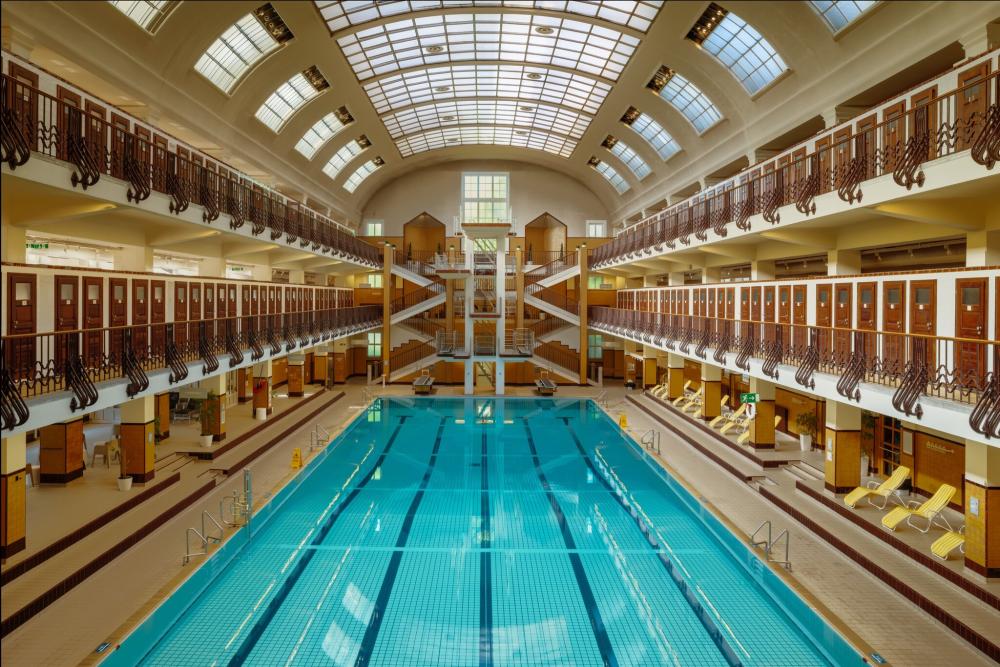
Vienna has succeeded in curbing the craving to own. It has done it by driving down the price of land through rezoning and rent control. In general, the beneficiaries of these land-use policies are less the Gemeindebauten (they stopped building from 2004 to 2015 and now only produce some 500 units a year) and more the limited-profit housing associations, the origins of which preceded Red Vienna and have built 3,000 to 5,000 units a year for the last four decades.
Today limited-profit housing accounts for half the city’s social housing. Limited-profit housing associations are restricted to charging rents that reflect costs. Investors — banks, insurance funds — may buy shares of the limited-profit housing associations, generally to help fund initial construction. They are paid a low rate of annual interest on their shares. Any profits beyond that must be reinvested in the construction of new social housing. “It creates a revolving flow of financing for social housing,” said Justin Kadi, a professor in planning and housing at the University of Cambridge. Vienna’s main outlay toward housing is now providing low-cost financing for construction — and the government gets that money back.
On a gray Friday, Wilhelm Andel, a tall 84-year-old wearing jeans and a leather jacket, greeted me at the Alt-Erlaa tram stop to show me the limited-profit complex where he had lived for 40 years. Alt-Erlaa is one of the largest limited-profit complexes in Vienna, with 3,181 units in 18 futuristic towers, 23 to 27 stories tall, built between 1973 and 1986. As we approached, I saw that the towers had aged surprisingly well, maybe because greenery is timeless, and vegetation seemed to cascade off the tiered balconies. Willie had chosen a unit on the sixth floor. His rent for a nearly-1,200-square-foot apartment was 824 euros — an amount that would be reasonable for Amarillo, Texas, or Shreveport, La., but out of the question in any of the 50 largest American metro areas.
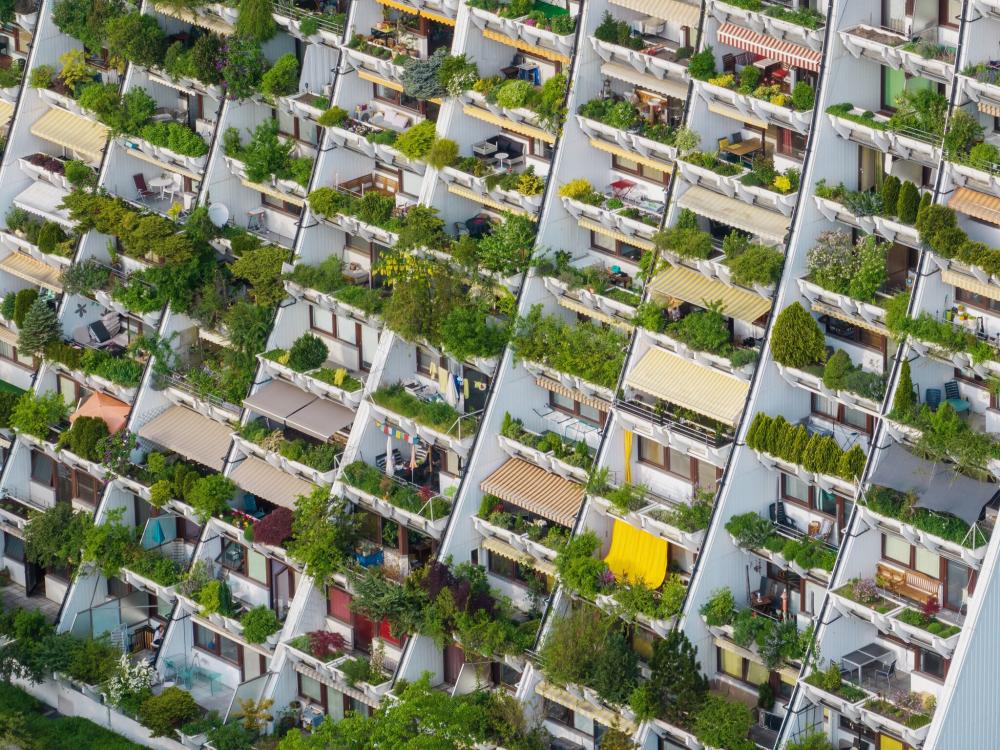
Living in Alt-Erlaa, Willie enjoyed access to seven rooftop swimming pools, seven indoor swimming pools, tennis courts, gyms and acclaimed art. When the rest of the delegation joined us, he led us toward one of his favorite aspects of the buildings: two murals in the lobby of the second building meditating on the role of the news media and labor in society. They were by the Austrian artist Alfred Hrdlicka. “They remind me of Orozco,” said Dorca Reynoso, an employee at Verizon, referring to the political murals of the Mexican painter José Clemente Orozco. Reynoso’s rent in Manhattan doubled in 2014 to $1,250. When her landlord proposed a 50 percent increase again in 2022, she was unable to pay and ratcheted up her organizing campaign against her landlord. “They’re so beautiful,” she said, gazing at the paintings.
For this very reason, Vienna’s limited-profit and nonprofit units were many of the delegates’ favorites. Art and aesthetics matter. We visited a small nonprofit building, a co-op, that was successfully designed and developed by strangers who responded to a newspaper ad. The top floor had an expansive roof deck, a communal kitchen, a playroom and a sauna. “You mean I could be in the sauna when my kids are in the playroom?” said Julie Colon, a Bronx organizer who told me she gave birth alone while in the shelter system. “This is crazy.” Shanti Singh, a tenant-rights activist from the Bay Area with short, asymmetrically cropped hair, lingered in the sunny library with its tall windows and honey wood walls. “I never want to leave,” she said.
The spiral of overvaluation in housing, which makes the housing-haves rich and the have-nots desperately poor, has brought us to a point where only something radical can solve it. The problem with housing in the United States is that it has been locked in as a means of building wealth, and building wealth is irreconcilable with affordability. The housing crisis in the United States is proof. Even in 2017, before the pandemic, around 113 million Americans — some 35 percent of the nation’s population — were living with a serious housing problem, such as physically deficient housing, burdensome costs or no housing at all, notes Alex F. Schwartz, an urban-studies professor at the New School.
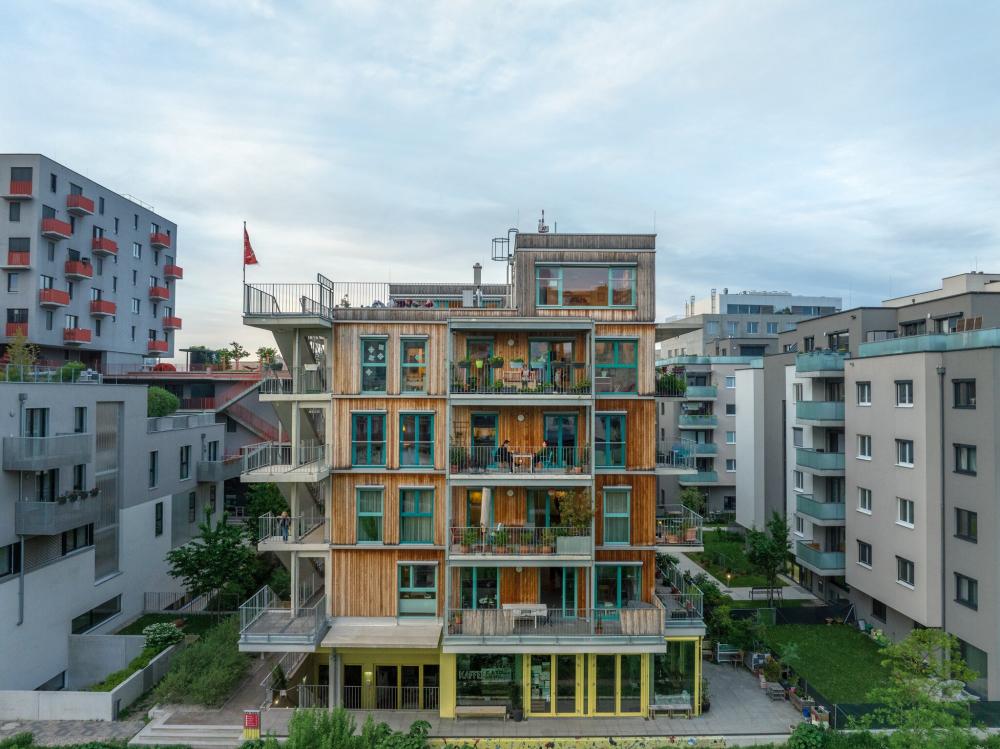
Calls for a federal social-housing plan in America might sound far-fetched, but make no mistake: The United States government intervenes heavily in the housing market. It’s just a two-tiered system, as Gail Radford, the historian, argues. There’s generous support for affluent homeowners and deliberately insufficient support for the lowest-income households. In 2017, the United States spent $155 billion on tax breaks to homeowners and investors in rental housing and mortgage-revenue bonds, more than three times the $50 billion spent on affordable housing.
That $50 billion isn’t nothing. In fact, in many U.S. cities, public spending per capita on housing and community-development subsidies is higher than in Vienna. But it seems clear that much of this money is misspent, whether through inefficient private-public partnerships like the low-income-housing tax credit; or through distortionary vouchers; or, most dubiously of all, through subsidizing homeowners, the people who need it least. “If you give everyone demand-side subsidies, like vouchers, and there’s a supply shortage, it’s going to drive up prices,” Chris Herbert, the managing director of Harvard’s Joint Center for Housing Studies, told me. It costs the state more, and landlords often wind up pocketing the profits.
Though the Gemeindebauten represented a large initial government outlay, Vienna’s social housing is now self-sustaining. Guess how much of the residents’ salary goes toward the program. One percent. Social housing drives down rents in the private market by as much as 5 percent. Vouchers may appear cheaper in the short term, but directly financing well-regulated public and limited-profit construction is the only way to mitigate speculation and hedge against ever-increasing housing costs. In 2020, New York and California spent $377 and $248 per capita, respectively, in housing development, while Vienna spent just $124 — and approximately half of Vienna’s spending is on low-interest financing that will be repaid and then re-lent.
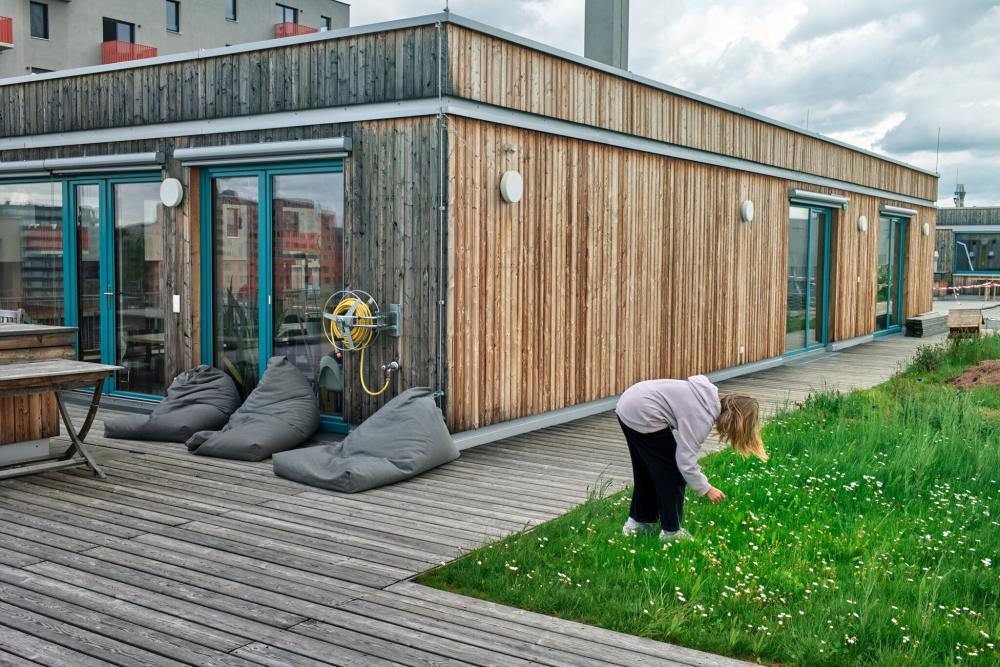
Social-housing programs have existed in America before, and they exist in America to this day. Local social-housing programs, many of them inspired by Vienna, are underway in Montgomery County, Md.; Seattle; and California. And they have a long legacy in New York, which built 66,000 affordable apartments and 69,000 limited-profit co-op apartment units from 1955 to 1981 under the Limited-Profit Housing Companies Law, also known as Mitchell-Lama, after the two legislators who introduced it. In combination with public housing, Mitchell-Lama units are a main reason economic diversity remains in the Lower East Side, Williamsburg and Chinatown.
Housing expense has been a staggering burden for so many of us, for so long, that it’s hard to even contemplate what it would mean to have it recede in our minds. When I spoke to Peter Pilz, the politician who took over his grandmother’s unit in Goethehof, I asked him, as I asked every Viennese tenant of social housing, what he did with all the money he saved thanks to his cheap rent. “I haven’t invested a single penny in the stock market,” he told me. “I would consider it an enormous waste of time to sit in front of my computer and study what the stock market is doing. I prefer to use my time writing, editing an online newspaper supporting interesting initiatives and having fun.”
Pilz was staying in Tuscany when we spoke, and he had spent the day bicycling. He stopped in Pienza to admire the small purple cathedral and sample the famous pecorino. Then he cycled on to Montalcino, where he sipped some Brunello, before returning to Bagno Vignoni to go swimming. “That’s my hard life,” he told me. “If people don’t have to struggle all day long to survive — if your life is made safe, at least in social conditions — you can use your energy for much more important things.”
[Francesca Mari is a contributing writer for the magazine and an assistant professor of the practice in the literary-arts department at Brown University. She writes about all aspects of housing. Luca Locatelli is a photographer whose work focuses on environmental images and solutions to the climate crisis. He has been working on “The Circular Economy,” an immersive project premiering in September at the Gallerie d’Italia museum of Turin, Italy.]

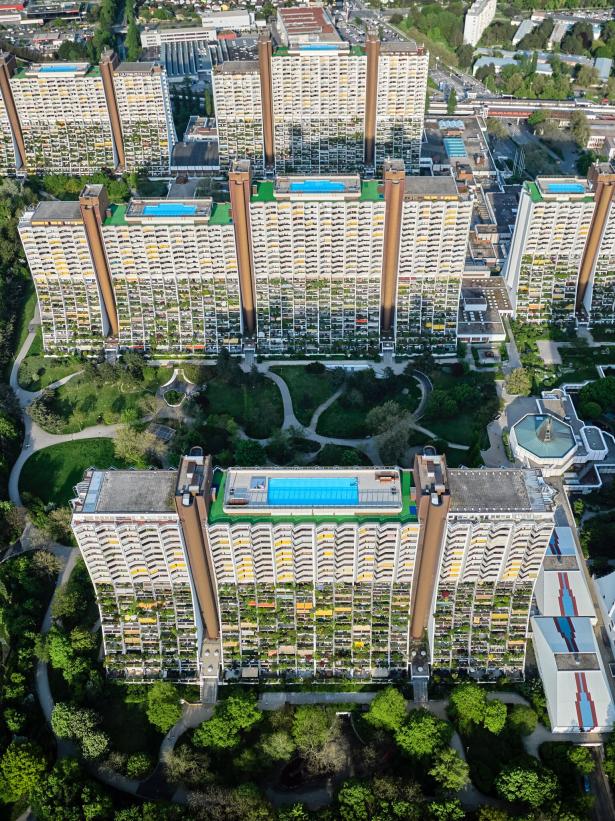
Spread the word